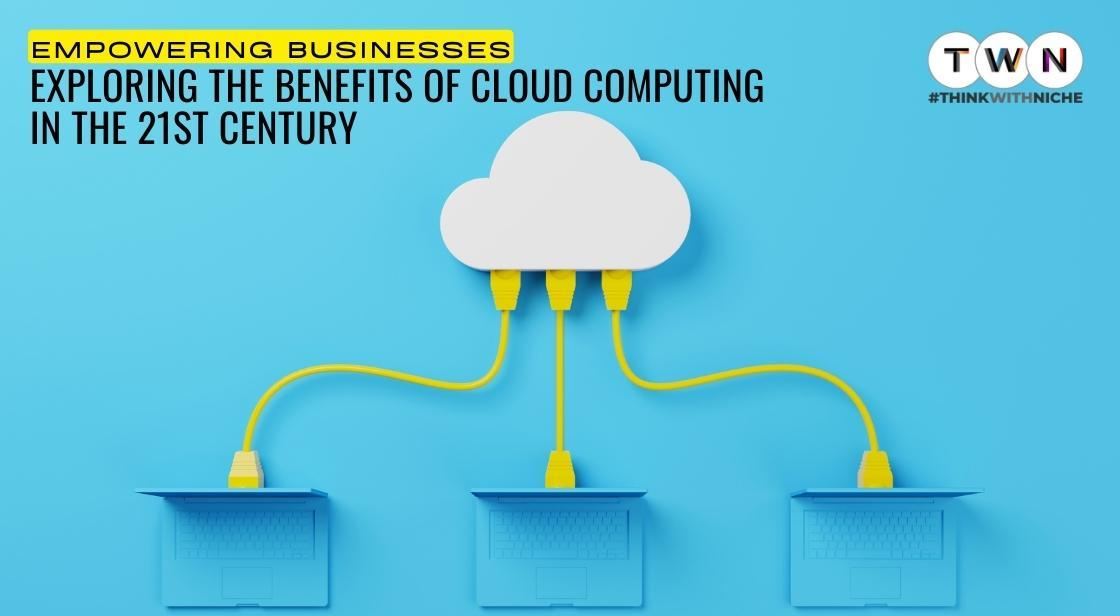Empowering Businesses: Exploring the Benefits of Cloud Computing in the 21st Century
Cloud computing is no longer a buzzword, but a critical business tool in the 21st century. With its immense potential, it is revolutionizing the way businesses operate
In the context of business, this change is driven by innovation and technology. And among the most significant of these technologies is cloud computing. It's changing the way businesses operate and compete.
Are you a business owner looking to revolutionize your operations?
Are you an executive seeking to enhance productivity and drive growth?
Or perhaps you're just a curious reader, eager to learn about the latest tech trends?
Whichever category you fall into, this article will provide a comprehensive exploration of cloud computing's benefits, packed with the latest data, facts, and real-world examples of successful cloud adoption.
Empowering Businesses: Exploring the Benefits of Cloud Computing in the 21st Century
Cloud Computing 101: What it is and How it Works
Imagine your business had an invisible superpower that could store, manage, and process data from anywhere, without being shackled to physical infrastructure. Sounds intriguing, right? Well, that's exactly what cloud computing offers.
So, what is cloud computing? Simply put, it's the delivery of computing services such as servers, storage, databases, networking, software, and analytics over the internet (the "cloud"). The beauty is, you only pay for what you use, much like utilities in your home.
But how does it work? Let's break it down.
Under the Hood: The Working Mechanism of Cloud Computing
It's simpler than you might think. When you store a file on your PC, it's saved on your hard drive. With cloud computing, instead of saving on your local hard drive, you're saving data on a remote database. This 'cloud' is actually a network of servers, where each has a different function.
Some servers use computing power to run applications. Others are responsible for storing data. When you upload a photo to the cloud, for example, it's moved from your device to a server in a massive data center. And voilà! You can access it anytime, anywhere, from any device with an internet connection.
What is Cloud computing?
Cloud computing is a technology that enables the delivery of on-demand computing resources over the Internet. It involves the use of remote servers hosted on the Internet to store, manage, and process data, instead of relying on local servers or personal computers.
In simple terms, cloud computing allows users to access and utilize computing resources, such as servers, storage, databases, software applications, and networking, without the need for physical infrastructure or hardware investments.
Cloud computing operates on a shared pool of resources, which can be accessed by multiple users or organizations simultaneously.
These resources are typically provided by cloud service providers, who manage and maintain the infrastructure and make it available to users on a subscription or pay-as-you-go basis.
Primary models of cloud computing
The three primary models of cloud computing are:
Infrastructure as a Service (IaaS): Provides virtualized computing resources, such as virtual machines, storage, and networks, allowing users to build and manage their own IT infrastructure on the cloud.
Platform as a Service (PaaS): Offers a complete platform for developing, testing, and deploying applications. PaaS providers provide the underlying infrastructure, including operating systems, runtime environments, and development tools.
Software as a Service (SaaS): Delivers software applications over the internet on a subscription basis. Users can access and use these applications directly through a web browser without the need for installation or maintenance.
Cloud computing offers several advantages, including scalability, flexibility, cost savings, and improved data security. It allows businesses to focus on their core activities while leaving the management of IT infrastructure to cloud service providers.
With cloud computing, organizations can easily scale their resources, adapt to changing needs, and access data and applications from anywhere, promoting efficiency and innovation in the digital era.
Types of Cloud Computing: Public, Private, and Hybrid
There are primarily three types of cloud computing: public, private, and hybrid. Public clouds are owned and operated by third-party providers, offering their computing resources over the Internet. Google Cloud and Amazon Web Services are examples of public clouds.
Private clouds, on the other hand, are exclusive to a single business or organization. They offer more control over data and security. Then there's the hybrid cloud, a blend of public and private, combining on-premises infrastructure with public cloud services.



